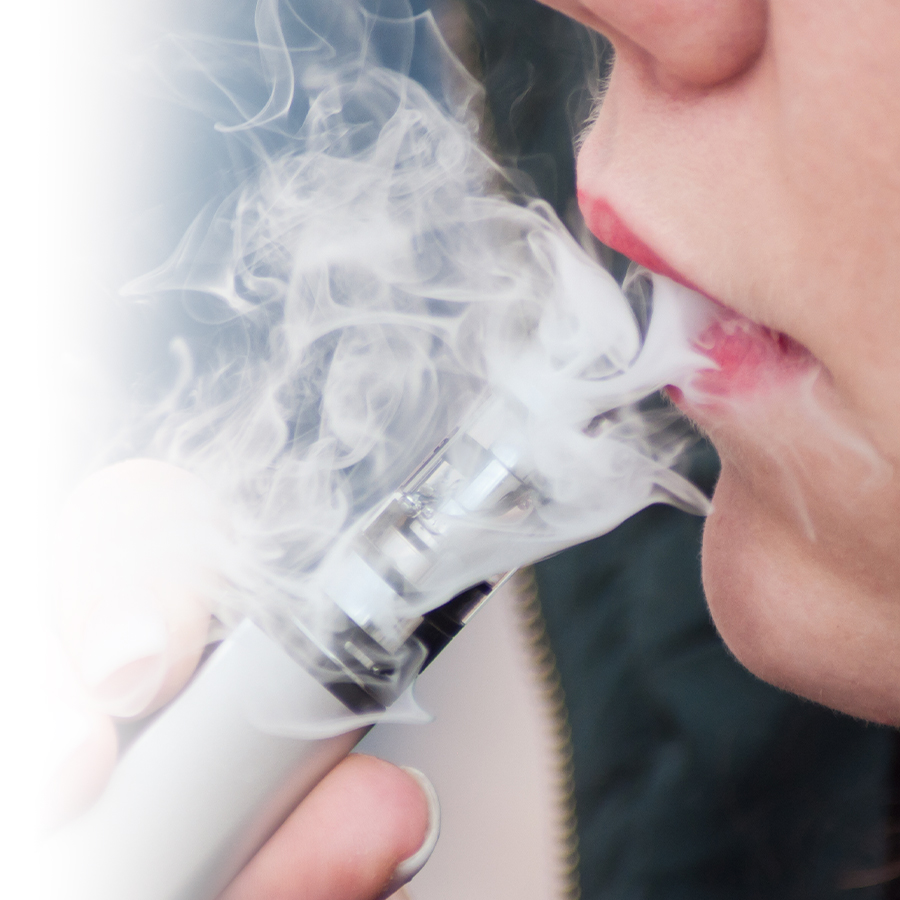Need a consultation related to the health condition discussed in this article? Schedule an appointment with your pharmacist at a time that works for you.
Your teen is vaping and that worries you? Nowadays, vaping is increasingly common among young people, which raises many questions. For one, e-cigarettes are often perceived to be less harmful, but in truth, they can cause damage to a smoker’s health, and lead to a powerful nicotine dependence or addiction. Therefore, it is important to make teenagers aware of its dangers.
What is vaping?
Vaping refers to the inhalation of smoke vapor generated by an electronic device, like the so-called e-cigarette, which heats a liquid (e-liquid) that most of the time contains nicotine, making it a perceived alternative to smoking cigarettes.
Why do young people vape?
According to the 2022 Canadian Tobacco and Nicotine Survey (CTNS), the main reasons that people aged 15 to 19 use vaping products (with or without nicotine) are stress reduction (21,7%), the enjoyment they get from doing it (16,4%), and simple curiosity (17,5%).
Clearly, vaping appeals to young people for a number of reasons, including:
- Curiosity and the appeal of trying something new play an important role.
- The hip, stylish design of e-cigarettes—which sometimes look like a USB key or a pen—can make vaping look cool.
- Social pressure—be it from friends, social-network influencers or adult vapers—often encourages young people to try vaping.
- The secretion of dopamine (a pleasure hormone) in the brain, and the relaxed sensation it causes. Inhaling smoke or vapor with nicotine increases the dopamine stimulation tenfold.
How is vaping dangerous for young people?
The long-term effects of vaping on mental and physical health are still largely unknown at this time. Ongoing studies will likely shed more light on the subject. However, this is what we do know:
- Some vaping products contain high levels of nicotine. And nicotine in high doses is shown to have a number of harmful effects including palpitations, headaches, stomach aches, nausea, confusion, dizziness and shaking.
- Young people can become dependent on nicotine at lower doses than adults. What’s more, once a young person shows signs of nicotine dependence, quitting vaping can be difficult.
- Certain substances released when vaping liquids are heated cause damage to the lungs, causing serious lung disease or aggravate lung conditions already present in people who vape, like asthmatics.
- The harmful effects of nicotine are of major concern in children and teens, as their brain development continues all throughout adolescence and into early adulthood.
- Even in small quantities, vaping liquids containing nicotine can be very harmful:
- if swallowed
- if absorbed through the skin.
- Vaping can also affect oral health (gum and mouth irritation, and dry mouth, which promotes dental plaque and increases the risk of tooth decay).
- If the e-cigarette breaks or malfunctions, there’s a risk of burns or serious injury.
My teen vapes. What to I do now?
Discovering that your teen is vaping can be worrying. But remember, it's important to take specific steps to properly deal with the situation. By taking an understanding and collaborative approach, you can help foster open lines of communication that will help your teen make better, more informed decisions.
- Stay calm: Avoid emotional reactions or aggressive confrontation. Stay cool and remain open to communication.
- Communicate openly: Engage in an open conversation with your teen. Ask questions to understand why they started vaping and whether they know about the risks, then listen to their answers attentively.
- Educate your teen: Share what you've learned about the dangers of vaping, including health risks, and the potential for nicotine dependency or addiction.
- Offer alternatives: Discuss different ways of coping with stress or social pressures that don't include substance use. Encourage them to take part in healthier activities.
- Keep talking: Follow your teen's behaviour closely and continue talking about the subject regularly. Watch for other signs of risk-taking behaviour or underlying problems.
How to stop vaping?
If you or your child want to quit smoking or vaping, your pharmacist can help you quit cigarette or vaping products by prescribing a smoking cessation aid, by providing advice and by helping you create an action plan.
In addition to the accompaniment provided by your pharmacist, the I QUIT NOW service and its free, personalized support, available online, by phone, in person or by text, are here to help you reach your goals.

